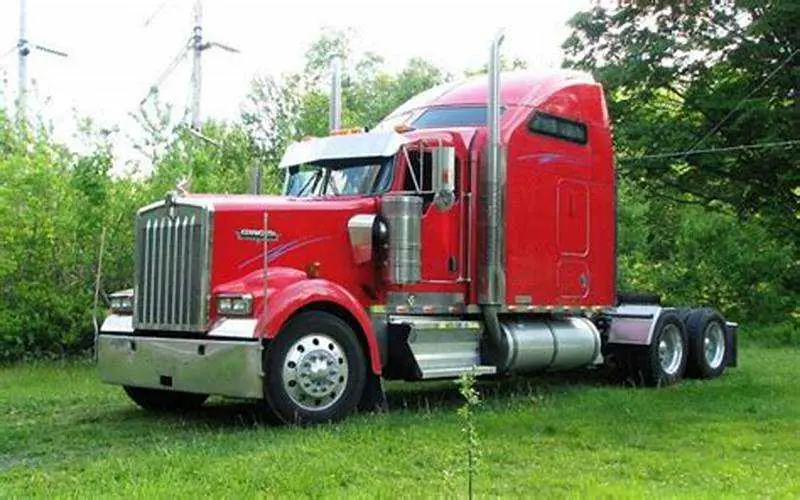
 Source: bing.com
Source: bing.com
Introduction
Hello, Vehicle Owner! Are you considering leasing a semi-truck for your business? If so, you’re in the right place. In this article, we will explore the costs associated with leasing a semi and provide you with valuable insights to make an informed decision. Leasing a semi can be a cost-effective solution for many businesses, allowing them to access the necessary transportation without the burden of purchasing a truck outright. Let’s dive into the details of how much it truly costs to lease a semi.
The Strengths and Weaknesses of Leasing a Semi
Leasing a semi-truck comes with its own set of advantages and disadvantages. Understanding these can help you determine if it is the right option for your business needs.
Strengths:







Weaknesses:







Cost Breakdown of Leasing a Semi
To give you a comprehensive understanding of the costs involved, let’s break down the expenses associated with leasing a semi-truck. The table below provides detailed information on each cost category:
| Cost Category | Description |
|---|---|
| 1. Down Payment | The initial payment made at the beginning of the lease term. |
| 2. Monthly Lease Payments | The recurring monthly payments for the duration of the lease. |
| 3. Insurance | The cost of insuring the leased semi-truck. |
| 4. Maintenance | The expenses associated with regular maintenance and repairs. |
| 5. Fuel | The cost of fuel required to operate the leased truck. |
| 6. Taxes and Fees | Additional taxes and fees, such as registration and licensing costs. |
| 7. End-of-Lease Costs | Any fees or charges incurred at the end of the lease term, such as excess mileage or excessive wear and tear. |
Frequently Asked Questions (FAQs)
1. Can I lease a semi-truck with bad credit?
Leasing companies have varying credit requirements. While bad credit may limit your options, it’s still possible to lease a semi-truck. However, you may encounter higher interest rates or stricter terms.
2. Are there mileage restrictions when leasing a semi-truck?
Yes, most lease agreements come with mileage limitations. Exceeding these limits can result in additional fees. It’s important to estimate your mileage needs accurately and negotiate higher mileage allowances if necessary.
3. Can I customize a leased semi-truck?
Leasing may restrict customization options, as the truck needs to be returned in its original condition. However, some leasing companies may allow minor modifications. Consult with the leasing company to understand their specific policies.
4. What happens if I want to return the truck before the lease term ends?
Returning the truck before the agreed-upon lease term may result in penalties or fees. Review the lease agreement for early termination clauses and associated costs.
5. Can I purchase the leased truck at the end of the lease?
Some lease agreements offer a purchase option at the end of the lease term. This allows you to buy the truck at a predetermined price. Discuss this option with the leasing company before signing the lease agreement.
6. Can I deduct lease payments on my taxes?
Lease payments are often tax-deductible. However, tax regulations may vary by region. Consult with a tax professional to understand the specific deductions available to you.
7. Is leasing a semi-truck better than buying?
Whether leasing or buying is better depends on your business’s specific needs and financial situation. Leasing offers flexibility and lower upfront costs, while buying provides long-term ownership and potential equity. Consider your business goals and consult with financial advisors to make the right decision.
Conclusion
Now that you have a comprehensive understanding of the costs associated with leasing a semi-truck, it’s time to weigh the pros and cons and determine if it aligns with your business needs. Leasing can provide flexibility, lower upfront costs, and potential tax deductions. However, it also comes with limitations and higher overall costs in some cases. Assess your business requirements, consult with leasing companies, and make an informed decision that suits your long-term goals.
Remember, leasing a semi-truck is a significant financial commitment, so it’s crucial to carefully review the terms and conditions of any lease agreement before signing. Happy trucking, Vehicle Owner!
Closing Words
In conclusion, leasing a semi-truck can be a viable option for businesses looking to access reliable transportation without the upfront costs of purchasing. However, it’s essential to consider the strengths, weaknesses, and costs associated with leasing before making a decision. Assess your business needs, review multiple lease offers, and consult with financial professionals to ensure you choose the best option for your long-term success. Safe travels and prosperous business, Vehicle Owner!
 MyVans Your Vehicle Solution
MyVans Your Vehicle Solution